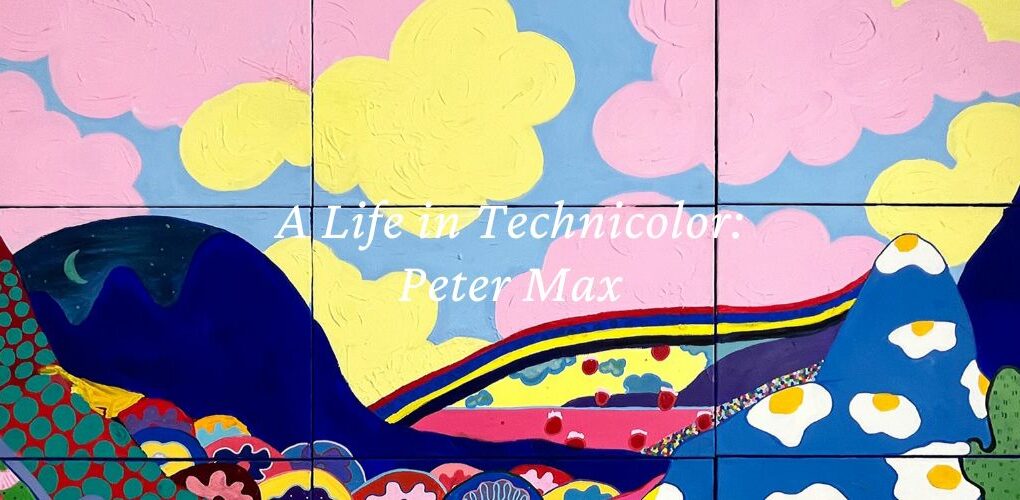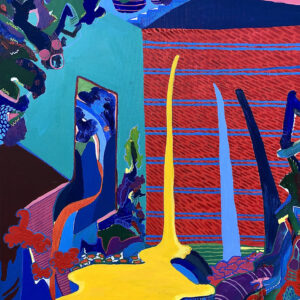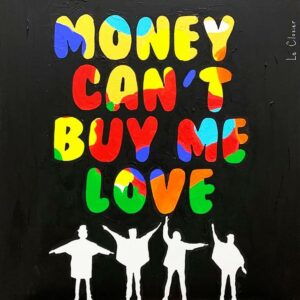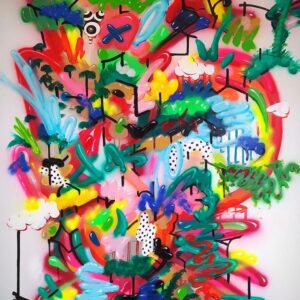Art History 101
A Life in Technicolor: Peter Max
A man whose life is as exuberant as his artwork, Peter Max became a leader in Pop art during the 1960s. Names like Andy Warhol and Roy Lichenstein shaped the themes of Pop art, but Max’s tendency toward psychedelic saturation became the defining color palette of the movement.
Born Peter Max Finklestein to a Jewish family in Berlin, his family was forced to flee Germany in 1938. The family found refuge in Shanghai, and with the encouragement of his nanny and mother, Max developed a love of color and learned to draw freely. After extensive travels, the family stopped in Paris, where Max studied Fauvism before finally settling in Brooklyn, New York.
In 1962 Max co-founded The Daly and Max Studio, a modest art studio in Manhattan, with his mentor, Don Rubbo, and friend, Tom Daly. With the studio as their flagship, the trio rose to prominence in advertising, and by 1968, Max’s 7UP “un cola” ads made his graphic design work a household name. His 1960s artistic era was aptly coined the “Cosmic 60s.” The master colorist imagined the cosmos in vivid and cheerful hues, returning to motifs of the galaxies to represent his connection to Eastern mysticism and belief that people contain the universe inside themselves—a nod to the spirit of the decade.
Max’s trippy illustrations for political protests solidified his artwork as a symbol of the counterculture. The work was one of many cases of his art as activism. When The United States Postal Office commissioned Max to create a stamp in honor of the World Fair, he used the opportunity to promote the environmental movement. In 1976 he designed posters advocating for the restoration of The Statue of Liberty.
In the 1980s, Max moved away from Pop art and embraced Neo-Expressionism with the same kinetic color. At age 84, Max no longer paints, but his legacy prevails in the enduring kaleidoscopic imagery artists appropriate to this day. Discover 5 Saatchi Art artists who take cues from Max in their own works.
Magdalena Bukowska
Polish painter, sculptor, and fashion designer Magdalena Bukowska creates “unreal spaces which can take the viewer to another universe.” She leans into simplistic, abstract forms and vibrant colors to convey happiness and freedom. Magdalena earned her MFA in painting and drawing from the Academy of Fine Arts in Cracow. See more of Magdalena’s work here.
Philippe Colpaert “Le Closier”
After moving to Paris in the early 2000s, Philippe Colpaert “Le Closier” began painting on the walls of his Montparnasse neighborhood. Street art continues to inform his saturated paintings, mixing people and pop culture on canvas, wood cutouts, and more. Le Closier’s official portrait commissions include Serena Williams and Paris-Saint-Germain’s president Nasser Al-Khelaifi. See more of Le Closier’s work here.
Eduardo Escobar “Edu Fuzz”

Experimental and spontaneous best describe Eduardo Escobar, aka Edu Fuzz’s mixed-media paintings. His Abstract Expressionist works capture movement and the connection between body and mind with colorful and bold flair. The Valencia-based artist received some formal training in art at the Fine Arts at the Polytechnic University. See more of Edu Fuzz’s work here.
Mary Robertson
Working in oil, acrylic, and watercolor, Mary Robertson uses experimentation and chance as a catalyst inspiration. Gestural marks influence the direction of her artworks, and she lets her bright palette guide her form. Her work has been exhibited across the Southwest United States. See more of Mary’s work here.
David Galan
Bursting with light and color, David Galan’s clean compositions and geometric shapes reimagine everyday objects in a contemporary Pop art style. Through years of experimenting, David has developed a distinctive mixed-media approach, working in painting, collage, and graphic design. See more of David’s work here.
Love reading about all things art? You can have articles from Canvas, curated collections, and stories about emerging artists delivered straight to your inbox. Sign up for the Saatchi Art Newsletter.



















